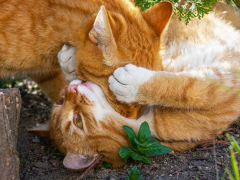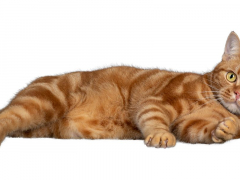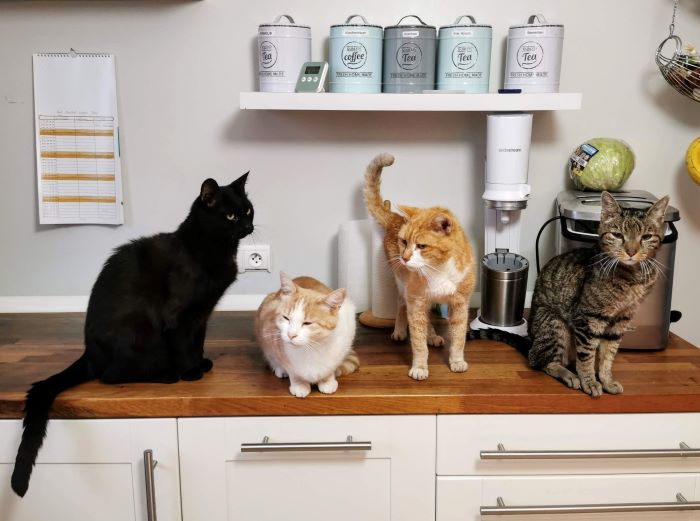
The kitchen counter is amongst the foremost hazardous places in our home, where we keep food, sharp objects, store electrical appliances, and cook meals on a hot stove.
Our cats are instinctively drawn to high places because of their innate climbing and agile nature. Cats feel most safe and secure when spotting, resting, and sleeping from high observation points.
Cats, likewise, are inquisitive and opportunistic feeders. Kitties that are highly motivated by food will find the counter extremely tempting proving too hard to resist when food or crumbs left in plain sight.
Though it may drive us crazy and unhygienic, from our feline’s point of view, it’s a natural behaviour to leap or climb places that are considered off-limits to us.
If you decide your cat isn’t allowed on benches or tables, the counter must become a surface your moggie doesn’t want to explore.
How To Keep Cats Off Of Counters?
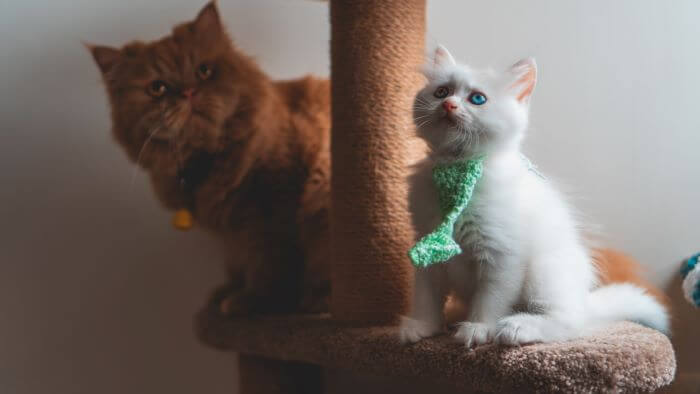
There are several ways to keep your cat from jumping on counters, including providing elevated platforms for them to use instead.
Follow these guidelines to prevent and manage counter jumping behaviour with the use of training and alternative solutions.
1. Aim High In The Kitchen

Place a perch on the kitchen window or let your cat sit on top of the pantry cupboards by stepping on and off the refrigerator. Sviatlana Yankouskaya / Shutterstock.com
Cats love being near us. Sitting on the kitchen counter puts them at an identical level as their human. As an alternative, offer your feline companion a high viewing platform nearby, like a cat tower or top of the refrigerator – voted by cats as “most well-liked kitchenette spot”.
Counter cruising is similarly popular in homes where windows are positioned near worktops, since bird watching is a cat’s beloved pastime. Place a perch on the kitchen window or let your cat sit on top of the pantry cupboards by stepping on and off the refrigerator. If your cat is getting on the worktop to access the window, cover the glass with a blind or window film.
2. Keep Food Out Of Sight
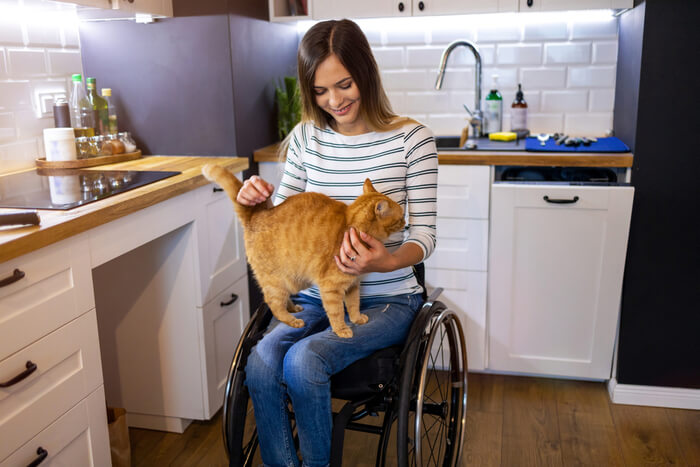
Keeping food out of sight will help to keep food-motivated cats off of the counter.
Regardless of whether food is provided by humans, cats are generalist, resourceful feeders, attracted to food found in novel locations. They will scavenge for scraps off kitchen counters, eat from bowls, steal food out of bins, and lounge in warm spots close to the stove in the hope of getting a treat.
Being an obligate carnivore, feed your cat species appropriate diet in small frequent amounts away from counters and don’t leave meat or grub unattended on bench-tops, especially when you are gone from home.
Provide puzzle feeders and eating stations throughout the house. Store food in the fridge and cupboards to avoid foraging.
Also Read: The 10 Best Cat Slow Feeders
3. Counter Surfing Training

Training your cat to go to a mat or stool on command will help them to stop using the counter.
The most efficient way to prevent counter-surfing is to modify your cat’s behaviour with the use of clicker training. There are three primary coaching steps to resolve counter surfing:
- Train ‘go to mat’ or ‘sit on a stool’ behaviour outside the meal preparation environment. The mat or stool becomes a rewarding place additionally to sitting on a higher stool and is an alternate to leaping on kitchen counters.
- Slowly approximate to reality scenario with few distractions.
- Reinforce the behaviour at a high rate in real-life context with as many repetitions as possible.
4. Design A Stimulating And Exploratory Vertical Environment
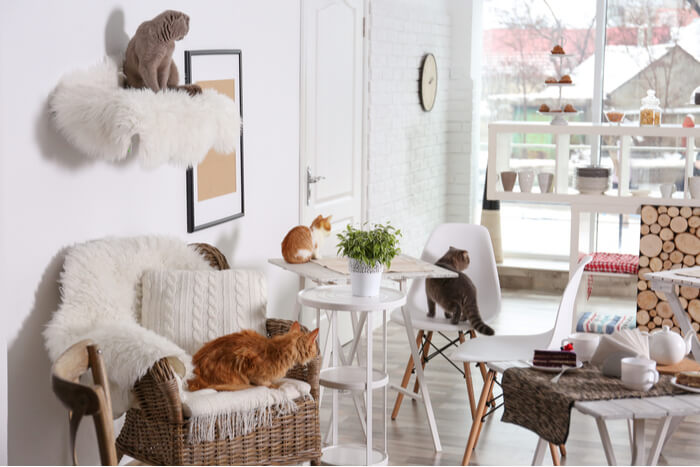
By giving your cats an environment with plenty of outlets for their climbing and exploratory instincts, you can reduce their desire to jump on the counter.
Provide your cat with appropriate vertical options for climbing, scratching and resting by creating an exploratory environment. Cat trees and furniture is a massive hit, although can be expensive.
- Create tall resting areas indoors with shelves, cabinets, desks, dressers, chairs and wardrobes. Place a comfy bed or blanket in the spot and regularly leave treats or catnip to entice your kitty.
- A window shelf or window-mounted bed will provide endless stimulation and a resting place for one or multiple cats.
- Build an outside cat enclosure. Place tree branches, cat-safe plants, water, cat-grass, shelves, DIY cat tree and hammock for your cat to perch while remaining out of reach of potential threats.
- In multi-cat homes, set-up plenty of towering sleeping spots to extend territory therefore the cats don’t feel in competition for resources and use the countertop.
- If your cat must share a room together with your beloved canine, they will be more inclined to avoid the ground and aim high. Set up lookout points and cuddlers on top of bookshelves.
- Elevated resting areas can range from a few inches off the bottom to the ceiling. A cushion on the floor, cardboard castle or a small cat tree is also an acceptable height for cats with arthritis or affected by blindness.
5. Deterrents
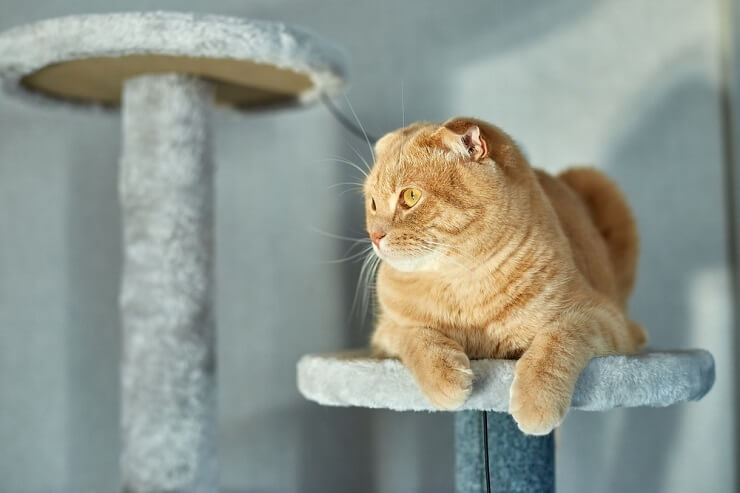
Deter your cat from climbing areas that you want to keep off-limits.
Deter your cat from climbing areas that you want to keep off-limits. Possible deterrents include:
- Double-sided tape: cats dislike walking on gluey surfaces.
- Aluminium trays filled with a bit of water: some cats have an aversion to water whilst others don’t mind stepping in wet areas.
- Carpet runners or mats with spiky nubs face-up: cats don’t like walking on prickly surfaces.
- Partly cover baking sheets or long pieces of cardboard along the edge of the counter where the cat jumps to make the surface unstable. You can add empty tin cans on the side to make noise when it falls off the countertop.
- PetSafe SSSCAT Spray Deterrent detects pet movement and releases a burst of unscented mist within a radius of 1 meter. Sprays work fast, so they are not recommended to be used around skittish or nervous cats. A nervous cat may become frightened and averse to specific rooms or scared to manoeuvre around the remainder of the house.
Read More: Best Invisible Fences For Cats Reviewed
Do NOT use a squirt water gun, since it only teaches your feline to run away when you pick up the sprayer and return once you’re gone.
Additionally, some cats don’t mind the spray and it does not work as a deterrent. Once your cat is consistently using the allocated skyscraper or stationary position, remove the deterrent!
Conclusion
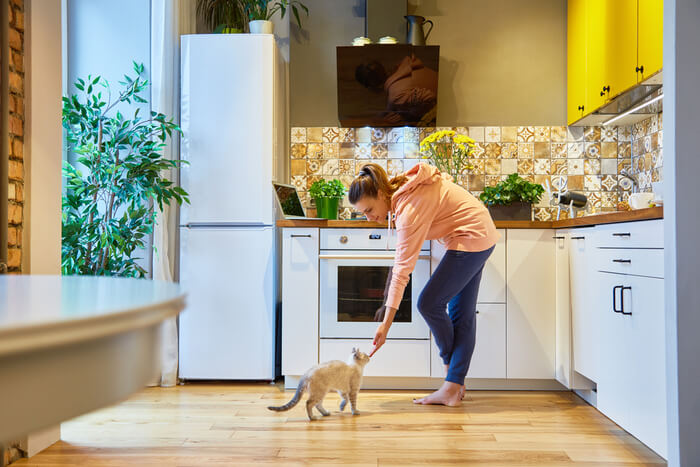
With the right training and environmental changes, you and your cat can comfortably share the kitchen without dangerous or unhygienic counter-surfing.
It is important to grasp that cats love climbing and perching on high surfaces. They don’t just misbehave, they express instinctive behavior. They are not as cognitively advanced as humans, thinking in terms of right or wrong or acting out of spite.
Although they may seem annoying, they behave in a very coherent manner relative to their environment.
Reward your cat for what you wish him or her to try and do, not what you don’t want them to do. If all attempts fail, contact a countertop jumping detective – better referred to as a cat behaviorists.
-
Heath, I. R. (2016). Feline Behavioral Health and Welfare. St Louis, MO: Elsevier. Pg 49 - 63 Retrieved November 27, 2020
-
Pryor, K. (2020, September). Train Your Cat. Waltham, Massachusetts, USA: Karen Pryor Academy. Retrieved November 28, 2020
-
States, T. H. (2019). Guide to Cat Behavior Counseling. (HSUS, Compiler) Washington, United States. Retrieved November 25, 2020

